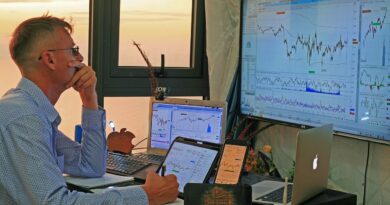MetaTrader
MetaTrader is a popular trading platform used by forex and CFD traders around the world. It was developed by MetaQuotes Software and was first released in 2002. The platform comes in two versions: MetaTrader 4 (MT4) and MetaTrader 5 (MT5).
MT4 is the older version of the platform and is widely used by forex and CFD traders. It is a user-friendly platform that offers advanced charting tools, technical indicators, and the ability to use automated trading strategies, known as Expert Advisors (EAs).
MT5 is the newer version of the platform and offers several additional features compared to MT4. For example, it has more advanced charting tools, more timeframes, and the ability to trade more asset classes, such as stocks and futures.
Both MT4 and MT5 allow traders to analyze financial markets, place trades, and manage their positions. The platforms are highly customizable, allowing traders to create their own indicators and trading strategies, and there are many third-party tools available that can be used with the platforms.
One of the key benefits of the MetaTrader platforms is that they are widely supported by brokers around the world. This means that traders can easily find a broker that offers the MetaTrader platform and use it to trade a wide range of financial instruments, including forex, stocks, and commodities.
Overall, the MetaTrader platforms are highly regarded by traders and are a popular choice for those looking for a powerful and customizable trading platform.
MetaTrader vs. TradingView
MetaTrader and TradingView are two popular trading platforms used by forex and CFD traders around the world. Both platforms offer advanced charting tools and technical analysis features, as well as the ability to place trades and manage positions. However, there are some differences between the two platforms that may make one more suitable for certain traders than the other.
MT4 is the more widely used version and offers a range of features, including advanced charting tools, technical indicators, and the ability to use automated trading strategies known as Expert Advisors. MT5 offers additional features such as more advanced charting tools, more timeframes, and the ability to trade additional asset classes such as stocks and futures.
TradingView, on the other hand, is a cloud-based platform that provides a wide range of charting tools and technical analysis features. It is highly customizable and allows traders to create and share their own indicators and trading strategies. TradingView also provides access to a social community of traders, where users can share ideas and strategies with each other.
One key difference between the two platforms is that TradingView is entirely web-based, meaning that it does not require any software downloads. This can be an advantage for traders who want to access their trading platform from multiple devices or who prefer not to download software onto their computer.
Another difference between the two platforms is that TradingView is not primarily designed for placing trades, although it does offer this feature. Instead, it is designed more for charting and technical analysis, while MetaTrader is designed specifically for trading.
Overall, both MetaTrader and TradingView are powerful trading platforms with their own unique strengths and weaknesses. Traders should carefully evaluate their own needs and preferences before choosing a platform. Some traders may prefer the more comprehensive trading features of MetaTrader, while others may prefer the charting and social community features of TradingView.
Should I choose MT4 or MT5?
Deciding whether to choose MetaTrader 4 (MT4) or MetaTrader 5 (MT5) depends on your trading needs and preferences. Here are some factors to consider:
- Asset classes: MT5 offers a wider range of asset classes compared to MT4, including stocks, futures, and options. If you are interested in trading these instruments in addition to forex and CFDs, then MT5 may be the better choice.
- Timeframes: MT5 offers more timeframes than MT4, which can be useful for traders who prefer to trade on shorter or longer timeframes.
- Technical indicators: MT5 has more built-in technical indicators compared to MT4, which may be useful for traders who rely heavily on technical analysis.
- Algorithmic trading: Both platforms support algorithmic trading using Expert Advisors (EAs), but MT5 has more advanced programming capabilities compared to MT4.
- Backtesting: MT5 has a more advanced backtesting feature that allows for more accurate historical testing of trading strategies compared to MT4.
- Market adoption: MT4 has a larger user base compared to MT5, meaning that there are more resources and support available for MT4 users.
Overall, if you are primarily interested in trading forex and CFDs and do not need the additional features offered by MT5, then MT4 may be the better choice. However, if you are interested in trading other asset classes or require more advanced technical analysis or programming capabilities, then MT5 may be the better choice. It’s also worth noting that many brokers offer both MT4 and MT5, so you may be able to try both platforms and see which one you prefer.
If you’re new to forex trading, consider reading our helpful 6-step guide on how to get started here and how to profit from simple Line Charts here.





